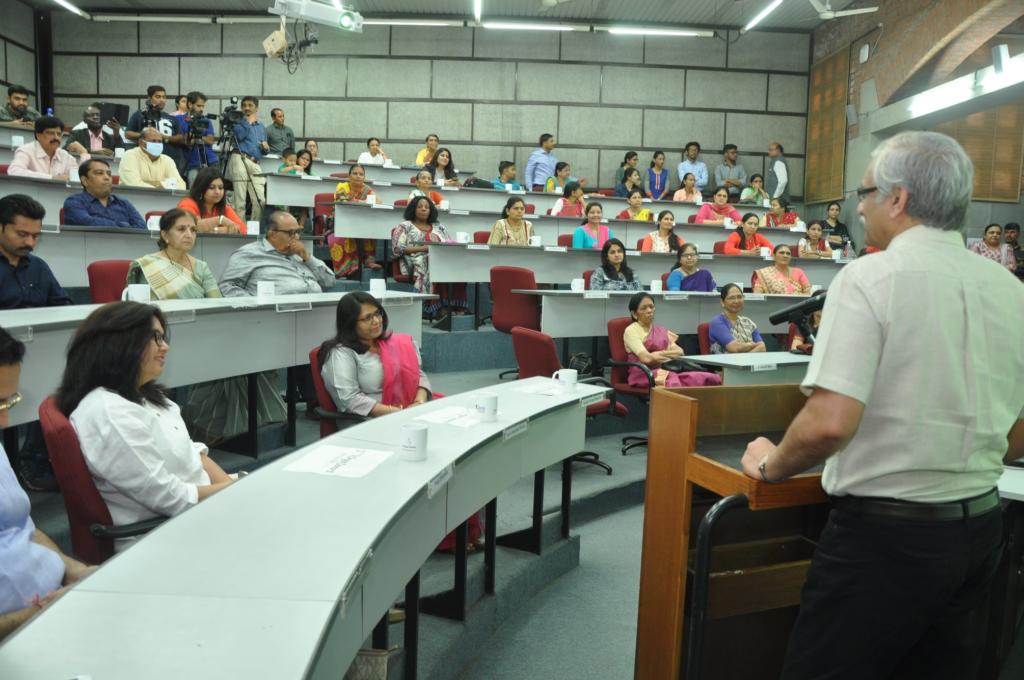“Revamp the higher education system, create world class multidisciplinary higher education institutions across the country – increase GER to at least 50% by 2035,” states the draft of New Education Policy as the objective of Higher Education policy-making in next few years. So, what stops India from creating world class multidisciplinary institutions of higher education and where do our universities fall short?
In the QS world university ranking 2020, not a single institute of Higher education from Indian could make place among top 100 or top 150. RS ranking is among most eminent ranker along with Academic Ranking of World Universities and Times Higher Education World University Rankings. Only three institutions from India have been able to get a place in top 200.
Indian Institute of Technology (IIT) Bombay improved its ranking by moving up 10 places to the 152nd spot from the 162nd last year. But the two other institutions (IIT Delhi and IISc Bangalore) witnessed a drop in the table. IIT Delhi slid to 182nd from 172nd while IISc Bangalore also moved down to 184th rank from 170th.
There are many problems with Indian Higher Education System. The New Education Policy draft identifies “Fragmentation of the higher education system, Too many silos; too much early specialization and streaming of students into disciplines, The lack of research at most universities and colleges, Sub-optimal governance and leadership of higher education institutions,” as some of major problems with country’s higher education system.
Except these major problems, some problems are with ranking parameters which stop Indian institutions to get a place among top institutions. These rankings have been designed to suit globalized Anglo-American countries which have large international diasporas and a good number of international students. For example, QS world university ranking have six parameters namely Academic Reputation, Employer Reputation, Faculty Student ratio, Citations per Faculty, International Faculty, and International Students.
If we make a comparison between, IIT Bombay (152nd rank), University of St Andrews (100th rank), and University of Basel (151st rank) then we found that IIT Bombay loses out mostly on International Faculty and International Students while the Indian university performs better than peers in Academic Reputation, Employer Reputation, and Faculty Student ratio. In fact, most Asian universities fall short before Anglo American universities on ‘International faculty’ and ‘International Students’ front.
In terms of Academic Reputation, IIT Bombay (54.5 points) performed better than University of St Andrews (45.2 points), a Scottish university and also performed better on the employer reputation front. But when it came to International Faculty, IIT Bombay (3.4 points) fared far less than the University of St Andrews. Similarly on the International Students parameter, University of St Andrews performed much better with 99.8 points compared to IIT Bombay which scored only 1.6 points.
Indian Institute of Science (IISc) Bengaluru ranked second in the world in terms of citations per faculty while Indian Institutes of Technology (IIT) in Roorkee, Kanpur, Delhi, Kharagpur and Guwahati, also appeared in the top 100 ranks when it came to citations per faculty.
To improve the ratio of International Faculty and International Students in India, Modi government launched ‘Study in India’ initiative in 2018. The programme aims to bring more than 2 lakh International Students in India by 2023. The premier institutes like IITs and IIMs have been asked to take initiatives at the institutional level to increase International Students.
All the three universities from India which made it to top 200 are public universities. Although, our country allows ‘private universities’ but we still do not have an ‘Ivy League’ (private universities by most measures) competitor. Some private universities like Ashoka and Shiv Nadar have fared well and exhibit great potential but in all, India still lags behind. Ancient Nalanda University used to get grants kings from south India and Southeast Asia. That model needs to be revived where universities look after their own finances. Allowing foreign university campuses in India will foster competition in private players and this will improve the quality of education.
With the government planning the start the implementation of New Education Policy, the condition of higher education in the country is expected to improve. As per the NEP draft, “All higher education institutions will either be universities or degree granting autonomous colleges – there will be no affiliating universities or affiliated colleges.” This would spark greater competition among higher education institutes to be among the best and ensure more institutional autonomy.
